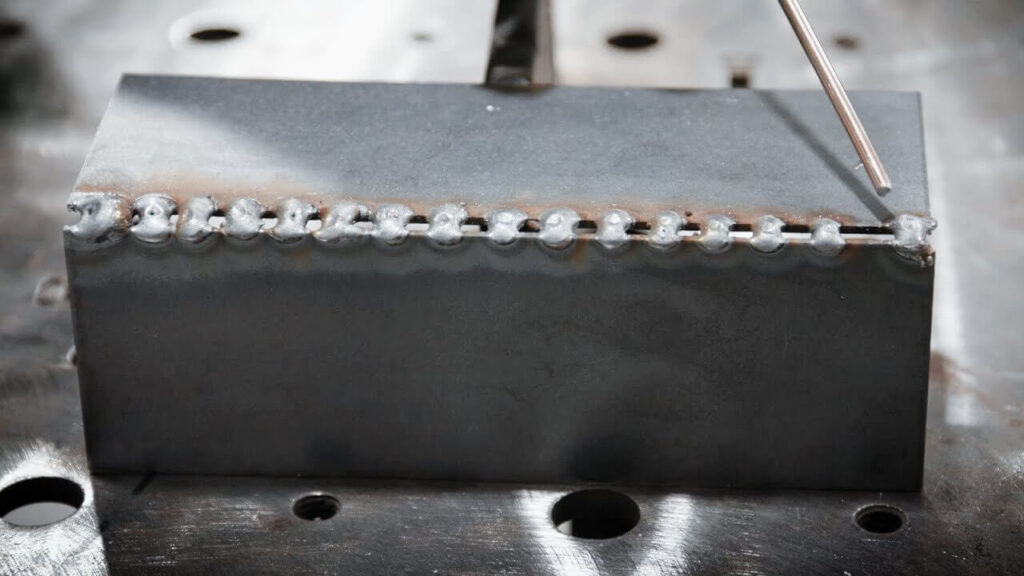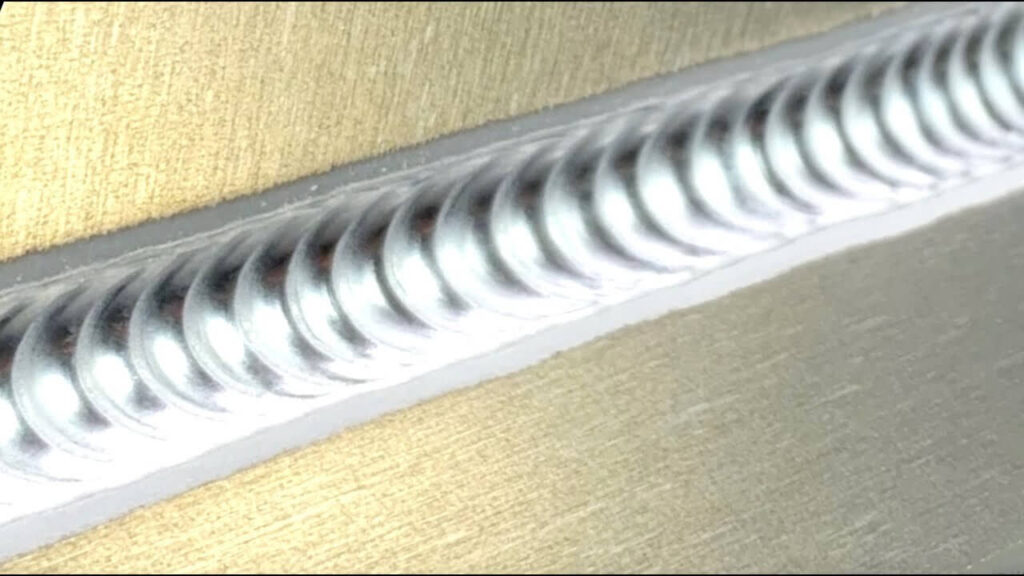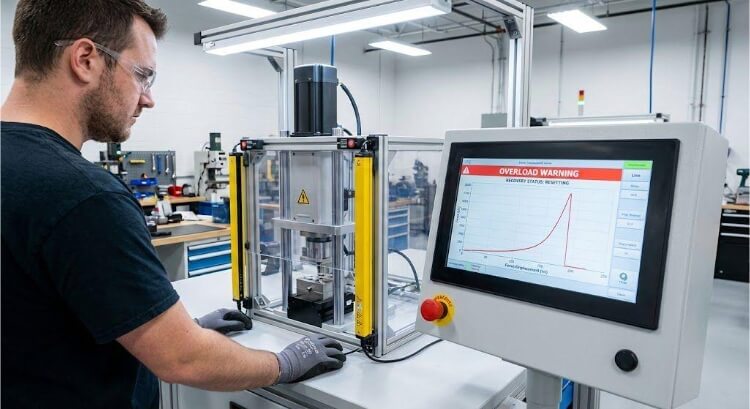Welding thin metal can be challenging, especially when you need precision and quality. Thin metals are more likely to warp, burn through, or produce poor welds. If you don’t manage the process well, it can lead to scrap metal or weak connections. Let’s examine how you can overcome these challenges and achieve strong, clean welds on thin metal.
You need to use the proper techniques and equipment to weld thin metal successfully. Start with a lower heat setting on your welding machine, which will prevent burning through the metal. Choose the right filler material and use short, controlled welds to avoid overheating the metal.
Welding thin metal requires precision, but you can create clean, strong welds every time with the right approach. Keep reading to learn more about the specific techniques and tips for welding different types of thin metals.
How to Weld Thin Metal: Step-By-Step
Welding thin metal requires precision and attention to detail to avoid distortion, burn-through, or warping. Here’s a step-by-step guide on how to weld thin metal:
Step 1: Choose the Right Welding Process
TIG welding offers the most control for thin materials. MIG works, too, but requires finer wire. Stick welding is usually too aggressive for metal thinner than 1/8″.
Step 2: Select the Proper Filler Rod or Wire
Match the filler to your base metal. Use thinner diameters—0.023″ to 0.030″ for MIG and 1/16″ or smaller for TIG. ER308L works well for stainless steel.
Step 3: Prepare the Metal Surface
Clean both sides with acetone or degreaser. Remove all oil, dirt, and oxidation. Use a stainless brush for aluminum. Proper cleaning prevents contamination.
Step 4: Tack Weld First
Place small tack welds every few inches. This holds pieces in place and prevents warping. Space them evenly to distribute heat.
Step 5: Control Heat Input
Set your machine lower than usual. For 24-gauge steel, start at 30-40 amps for TIG. Use pulse settings if available. Move quickly between tacks.
Step 6: Weld in Proper Technique
Hold the torch at a 10- 15-degree angle. For long seams, use a backstepping motion. To manage heat for MIG, use short bursts (“stitch welding”).
Step 7: Cool Down Gradually
Let the metal air cool naturally. Don’t quench it with water or compressed air. Slow cooling prevents stress cracks in thin material.
Welding Methods for Thin Metal
Welding thin metal requires selecting the proper method. Let’s explore the different types of welding processes and their suitability for working with thin materials.
MIG Welding for Thin Metal
When set up correctly, MIG welding works well for thin steel. Use 0.023″ or 0.030″ wire and a 75% argon/25% CO2 gas mix. Set the voltage low (15-18V) and keep the wire speed moderate.
TIG Welding for Precision Work
TIG welding is considered the best method for thin metals. Use DCEN polarity for steel and stainless steel and AC for aluminum. Start with 1/16″ tungsten and 1/16″ filler rod.
Stick Welding Challenges
Stick-welding thin metal can be difficult. Even with 1/16″ rods, it requires skill. Use 6013 rods at the lowest amps (40-70). A whip technique helps—move quickly forward, then back, to let the metal cool.
Laser Welding Advantages
Laser welding is excellent for precision work on thin metals. The focused heat minimizes distortion. No filler metal is needed for butt joints. However, it requires expensive equipment and proper safety measures.

Key Challenges in Welding Thin Metal
Welding thin metal presents several challenges that require careful attention. Let’s examine your key issues and how to manage them effectively.
Warping and Distortion Issues in Thin Metal Welding
Thin metals are more sensitive to heat, and uneven heating can cause them to bend, twist, or stretch. To avoid this, it is essential to control the heat and work in small, controlled sections. Tack welding and proper clamping can also help keep the metal’s shape throughout the process.
Managing Heat Input for Thin Metal Welds
Too much heat can burn through the material, while too little may result in weak or incomplete welds. Keeping the welding temperature low and using short welds ensures the metal doesn’t absorb too much heat.
Avoiding Burn-Through and Thin Metal Perforation
Burn-through happens when the metal melts too quickly, creating holes or thin spots. To avoid this, use the correct settings, including lower amperage, and focus on controlling your welding speed. Always test your settings on scrap metal before welding the workpiece to prevent damage.
Controlling Oxidation and Contamination During the Process
Thin materials are more likely to pick up impurities like dirt, oil, or moisture, affecting the weld quality. Cleaning the metal before welding and using the right shielding gas is essential to avoid these issues.
Choosing the Right Filler Material for Thin Metal Welding
Picking the right filler material is key to making strong, reliable welds in thin metals. Using the right filler helps ensure the weld is as strong as the base metal, preventing failure.
The Role of Filler Rods and Wires in Thin Metal Welding
Filler rods and wires add material to the weld joint. They fill gaps and help bond the metal pieces together. For thin metal, you need a filler with a lower melting point to avoid burning through the material. It should flow smoothly and create a strong bond.
Selecting the Correct Filler Metal for Different Materials
Different materials need different fillers. For example, fillers like ER4043 or ER5356 are good choices when welding aluminum. For stainless steel, ER308L or ER316L fillers are often used. ER70S-6 is a standard filler for mild steel, thanks to its versatility and ability to handle various conditions.
Preheating vs. Post-Weld Heat Treatment for Thin Metal
Preheating and post-weld heat treatment (PWHT) can help prevent cracking and warping in thin metals. Preheating the metal before welding lowers the temperature difference between the weld and the surrounding metal, reducing the risk of cracking.
The American Welding Society suggests preheating carbon steels to 100°F to 200°F. PWHT is done after welding to relieve stress in the metal.

Techniques to Improve Thin Metal Welds
Welding thin metal requires unique methods to avoid burning through the material or creating weak joints. The proper techniques help create a clean and strong weld. The following methods can improve thin metal welding.
Pulse Welding for Thin Metal
Pulse welding is a technique that switches between high and low currents. The high current creates the weld pool, and the low current allows the metal to cool down, preventing too much heat from building up.
Pulse welding benefits thin metals by reducing the risk of burning through. It also helps control the depth of the weld and creates a smooth finish.
Low Heat Input Techniques for Thin Metal Welding
Using low heat input is crucial when welding thin metals. Too much heat can cause warping or burn through the metal. To reduce heat, use a smaller filler rod or wire, weld faster, and lower the voltage on your welder.
Research shows that controlling heat input improves thin metal welds by preventing the metal from becoming too brittle. It also helps keep the weld clean and strong.
Controlling the Arc for Precision Welding
Controlling the welding arc is key to precision. A steady arc prevents unwanted spatter and burn-through. Keep a consistent distance between the electrode and the metals to maintain the arc. Also, use a short arc length to reduce heat and improve accuracy.
Tips for Avoiding Common Pitfalls in Thin Metal Welding
Welding thin metal can be challenging. Knowing how to avoid these problems will help you improve the quality of your welds and save time and material.
Preventing Spatter and Porosity in Thin Metal Welds
Spatter occurs when molten metal splashes away from the weld pool. Porosity happens when gas gets trapped in the weld, creating small holes.
To prevent these issues, adjust your welder settings. Lower the voltage and use the correct wire feed speed to reduce the spatter. Ensure steady gas flow to avoid porosity.
Overcoming Thin Metal Edge Cracking
Thin metal can crack easily, especially at the edges. To avoid this, control the heat input. Use lower amperage, and don’t hold the arc in one spot for too long.
Preheating the edges slightly can also reduce stress during welding. Also, using the correct filler material for the base metal can help avoid cracks.
Avoiding Excessive Weld Deposition
Excessive weld deposition happens when too much filler material is added, creating a thick weld bead. This can be a problem for thin metals because it can cause warping or weaken the weld.
To avoid this, choose the right filler rod size and keep a steady welding speed. Add only enough filler to fill the joint without building up extra material.
Conclusion
Welding thin metal presents unique challenges, but these challenges can be easily managed with the proper techniques. Key factors like controlling heat input, using the right filler material, and managing arc precision are essential for achieving clean, strong welds.
Ready to improve your welding skills or need expert advice on your next project? Contact us today to discuss how we can help you achieve the perfect weld.
FAQs
What is the best welding process for thin metal?
The best welding process for thin metal is often MIG or TIG welding. TIG welding offers better control over heat and is ideal for thin metals, while MIG welding is faster and easier for larger projects.
How can you prevent burn-through while welding thin metal?
To prevent burn-through, use a lower heat setting and a smaller filler rod, and maintain a quick welding speed. Controlling the arc and using proper gas flow can also help reduce the risk.
Why is heat control so critical in welding thin metal?
Heat control is critical because too much heat can cause the metal to burn through or warp. Thin metals heat up quickly, so using the right amount of heat helps avoid these issues.
What are the common filler materials used in thin metal welding?
Typical filler materials include ER70S-6 for mild steel, ER4043 or ER5356 for aluminum, and ER308L or ER316L for stainless steel. Always match the filler to the material being welded.
Can thin metal be welded without distortion?
Yes, thin metal can be welded without distortion if you use proper heat control, weld quickly, and clean the weld area. Techniques like pulse welding can also reduce distortion.
More Resources:
Preventing Warping in Thin Metal Welding – Source: Fabricating and Metalworking
The Importance of Shielding Gas in Welding – Source: Hobartbrothers
How to Correct Common Welding Mistakes – Source: Miller
Hey, I'm Kevin Lee

For the past 10 years, I’ve been immersed in various forms of sheet metal fabrication, sharing cool insights here from my experiences across diverse workshops.
Get in touch

Kevin Lee
I have over ten years of professional experience in sheet metal fabrication, specializing in laser cutting, bending, welding, and surface treatment techniques. As the Technical Director at Shengen, I am committed to solving complex manufacturing challenges and driving innovation and quality in each project.




